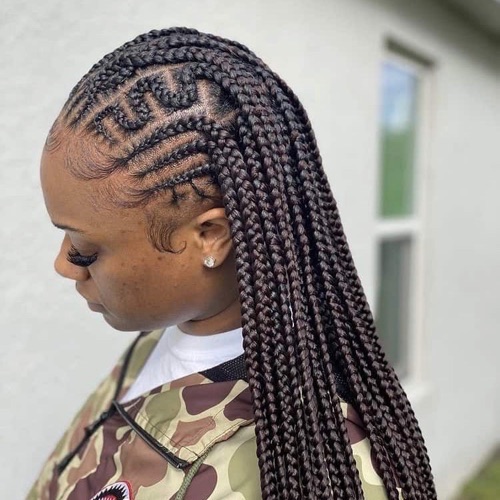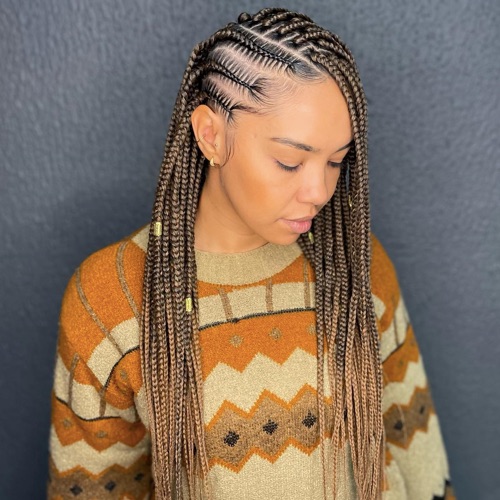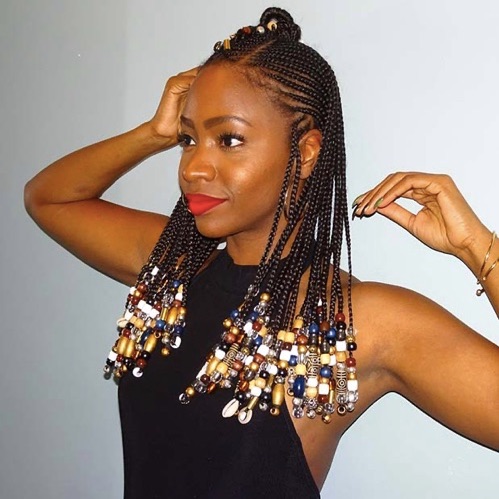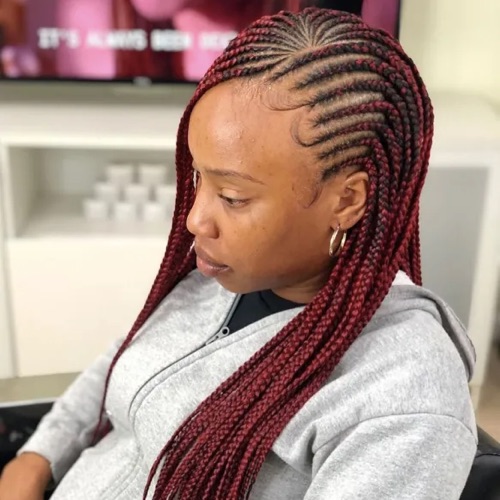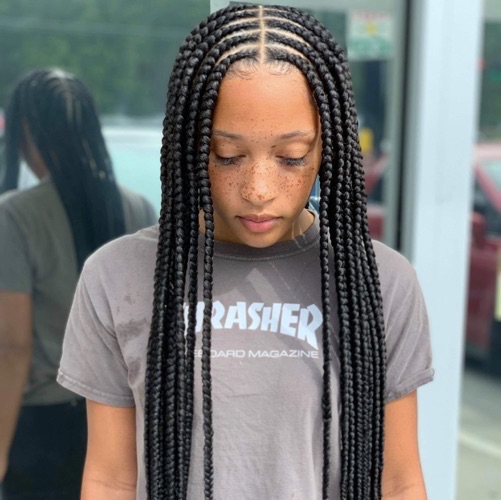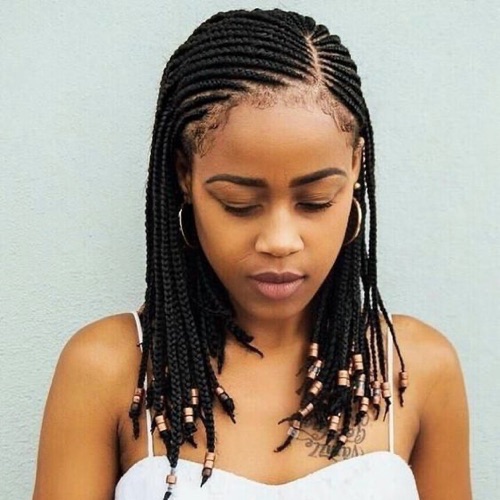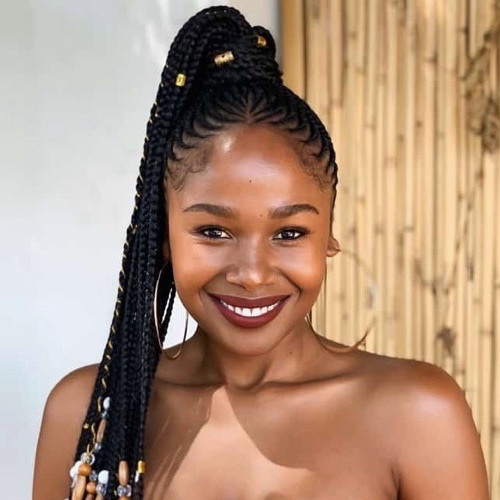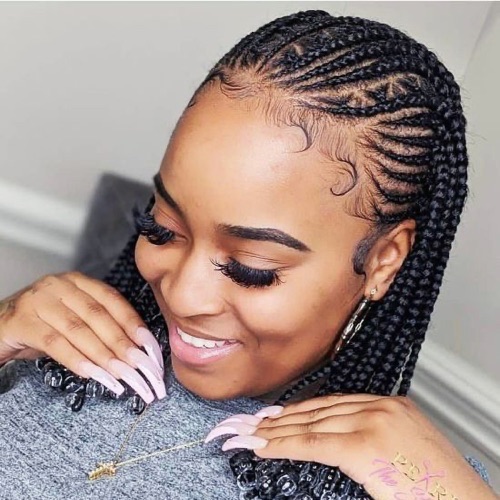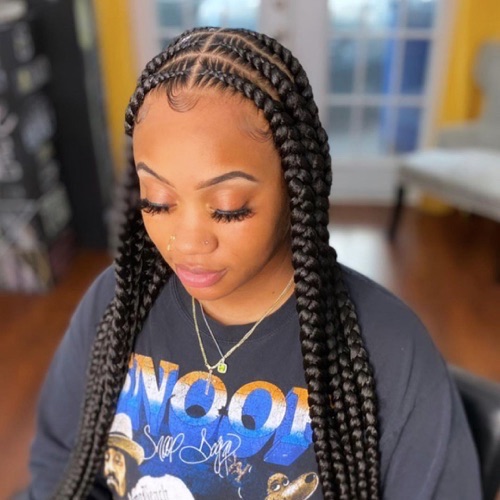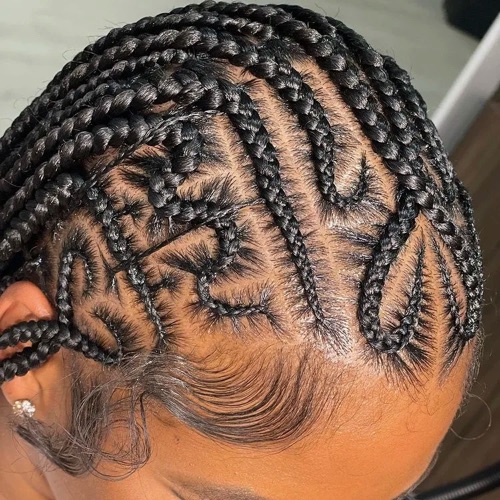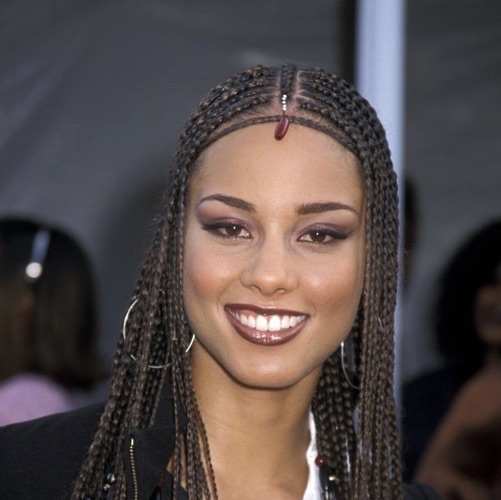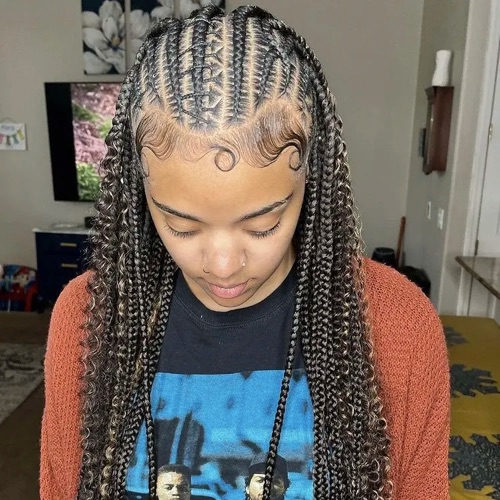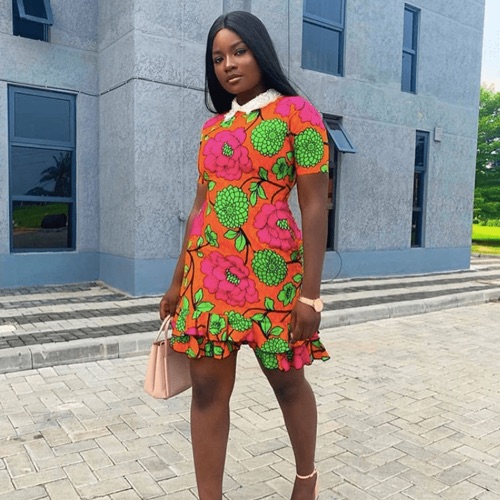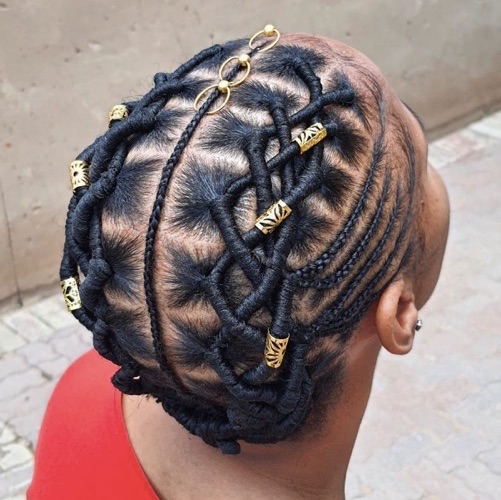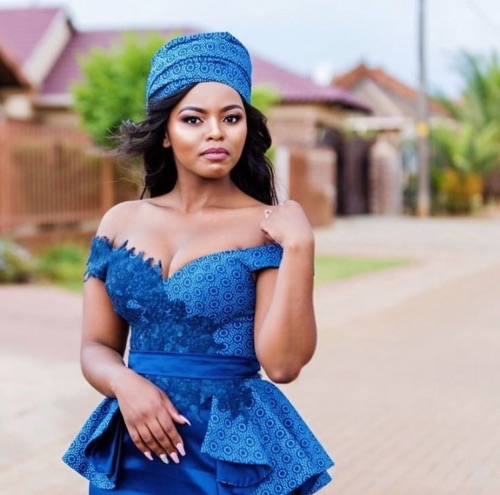Tribal braids are a time-honored tradition in West African cultures, originating from the Fulani tribe.
They typically feature cornrow braids down the centre of one’s head and are sometimes decorated with beads. This look has been modified over many years to become an ever-evolving art form.
From varying braid widths to intricate patterns, African tribal braids take on new shapes all the time. However, they all still remain rooted in their traditional cornrows.
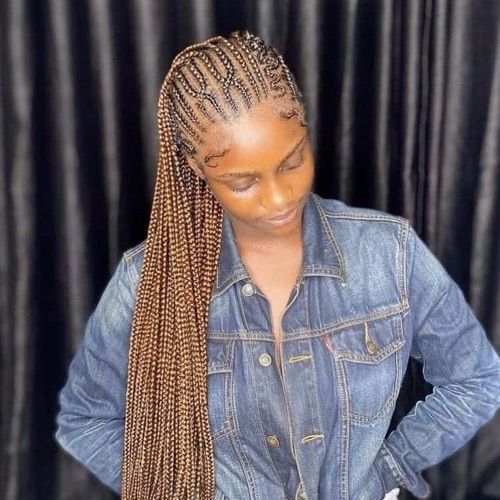
Tribal Braids Hairstyles
What are Braids?
For centuries, braids (or plaits) have been a popular hair styling choice in cultures around the world. Creating intricate patterns from three or more strands of intertwining hair, this timeless hairstyle has transcended generations and continues to be embraced today as an art form.
The most popular form is a solid, plain three-stranded composition. To build increasingly intricate patterns, an unrestricted number of strands can be utilized to produce an extensive variety of structures.
These include the fishtail braid, a five-stranded braid, rope braid, a French braid and a waterfall braid).
Typically, braided hair is a long and narrow structure that moves forward in a zigzag fashion. Each component strand being functionally equivalent.
Braiding can be likened to weaving, which usually involves two perpendicular strands of warp and weft. As the process progresses, these strands overlap one another in an intricate mass.
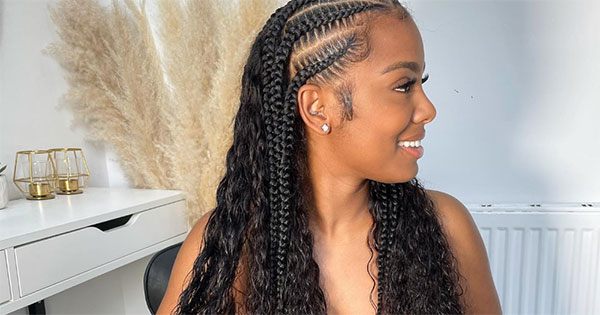
The History of Braids
Below we unpack the history of braids starting the very origins of this hairstyle all the way through to the modern day.
In European Culture
Many believe that the ancient practice of hair braiding dates back as far as 30,000 years ago due to a notable example in academia known today as The Woman of Willendorf.
This female figurine is estimated to have been created between 28,000 and 25,00 BCE according to various studies conducted on the artifact.
Scholars have long debated if the Venus of Brassempouy is wearing braided hair or a woven basket on her head.
About 25,000 years old, this sculpture appears to exhibit a sophisticated and intricate braid hairstyle.
A further illustration of a distinct origin was linked to the Saqqara cemetery found along the Nile River during Pharaoh Menes’ first dynasty. Despite that, the Venus’s of Brassempouy and Willendorf are dated back 25,000-30,000 years prior.
During the Bronze and Iron Ages, artists in various parts of the Near East, Asia Minor, Caucasus region, Eastern Mediterranean and North Africa showcased individuals such as Sumerians, Elamites and Ancient Egyptians with elaborately braided or plaited hair and beards.
Northern Europe has uncovered numerous bog bodies adorned with braided hairstyles, a sign of the Iron Age. In certain areas, braids not only served as an aesthetic purpose but also acted to convey important information about one’s identity and status upon quick glance.
A married woman may have worn her hair in a braid different from those for mourning or courtship.
Braids served to distinguish one’s social position. A diversity of hairstyles was widespread between tribes and nations, yet each style acted as a mark for the individual’s standing in society.
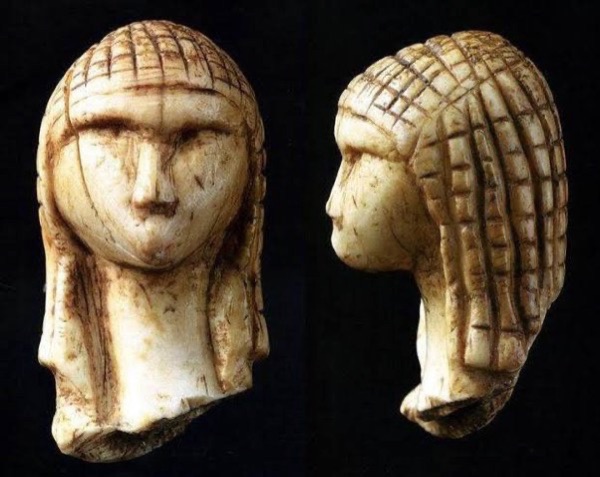
In African Culture
For centuries, people from Africa such as the Himba of Namibia have been dressing their hair in intricate braids.
These are unique to each African tribe and often tell much about a person’s family background, age, marital status and even wealth. These styles denote not only one’s social position but also signify religious beliefs or power.
Braiding is usually a collective art. The process of weaving hair takes time, so it often becomes an inclusive space where people can converse with each other while having their own tresses groomed.
It actually starts with the elders creating basic knots and braids for younger children in order to help them understand this craft better.
As older children observe and learn from the elders, they gradually commence practicing their traditional designs on younger generations; thus maintaining a rare tradition of intergenerational bonding.
Use Cases for Braids
From the timeless French braid to the chic corn row, braided hairstyles are a fun and creative way to switch up your look. Not only can they be used on their own, but these styles also make great additions or alternatives for traditional bindings like ponytails or pigtails.
So whether you’re looking for something classic or unique, there’s sure to be an option that fits your style!
In addition to creating unique hairstyles, braiding can also be used for adding decorative embellishments like beads and hair extensions. It is a useful technique for preparing horses’ tails and manes before competitions such as polo or polocrosse.
Consequently, it has become an invaluable tool in the world of equestrian sports!
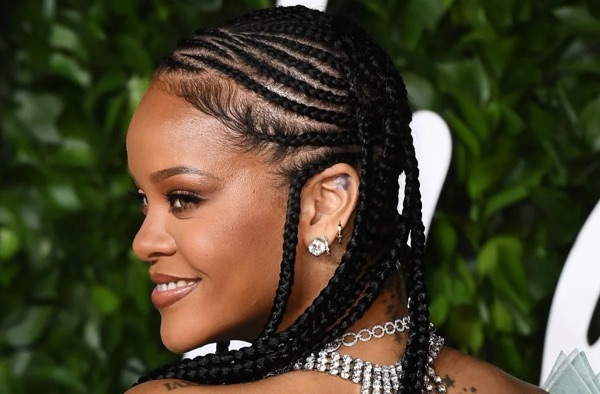
Tribal Braids in African Culture
Ancient and timeless, braids are an integral part of black culture that has been passed down for generations.
In fact, a photograph taken in 1884 reveals a Senegalese woman wearing her hair in the same intricate way we style it today. A living testament to its legacy!
In the African American community, braiding is traditionally done more firmly than in other cultures. Consequently, this makes them stay up better but may cause some initial discomfort.
Think of really tight cornrows and box braids! However, this tightness guarantees that your hairstyle will last longer compared to other looser styles.
To ease the discomfort, people commonly employ various tactics such as pain medicines, wearing their hair in loose braids and applying leave-in conditioner.
If you’re looking for an alternative to traditional braiding techniques, knotless braids are the answer. This method incorporates more of your natural hair and places less tension on the scalp, leading to fewer feelings of discomfort.
In African-American culture, braids tend to be interchanged with other fashionable hairdos such as hair twists and protective hairstyles.
As a result, trendy styles like Curly Mohawk, Half Updo or Side-Swept Cornrows are some of the most popular preferences for black people.

